
Philip St. John Basil Rathbone MC was a South African actor. He rose to prominence in the United Kingdom as a Shakespearean stage actor and went on to appear in more than 70 films, primarily costume dramas, swashbucklers, and, occasionally, horror films.

Ruth Chatterton was an American stage, film, and television actress, aviator and novelist. She was at her most popular in the early to mid-1930s, and in the same era gained prominence as an aviator, one of the few female pilots in the United States at the time. In the late 1930s, Chatterton retired from film acting but continued her career on the stage. She had several TV roles beginning in the late 1940s and became a successful novelist in the 1950s.
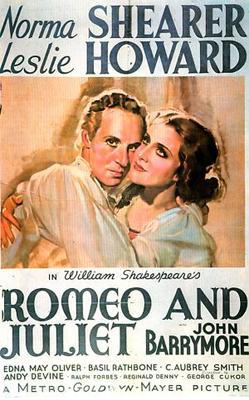
Romeo and Juliet is a 1936 American film adapted from the play by William Shakespeare, directed by George Cukor from a screenplay by Talbot Jennings. The film stars Leslie Howard as Romeo and Norma Shearer as Juliet, and the supporting cast features John Barrymore, Basil Rathbone, and Andy Devine.

Ralph Forbes was an English film and stage actor active in Britain and the United States.

Elsie Janis was an American actress of stage and screen, singer, songwriter, screenwriter and radio announcer. Entertaining the troops during World War I immortalized her as "the sweetheart of the AEF".
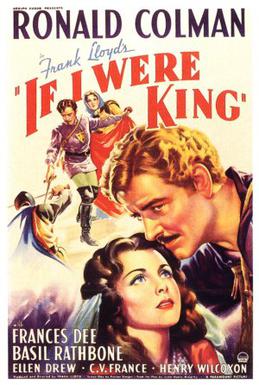
If I Were King is a 1938 American biographical and historical film starring Ronald Colman as medieval poet François Villon, and featuring Basil Rathbone and Frances Dee. It is based on the 1901 play and novel, both of the same name, by Justin Huntly McCarthy, and was directed by Frank Lloyd, with a screenplay adaptation by Preston Sturges.

Margaretta Mary Winifred Scott was an English stage, screen and television actress whose career spanned over seventy years. She is best remembered for playing the eccentric widow Mrs. Pumphrey in the BBC television series All Creatures Great and Small (1978–1990).
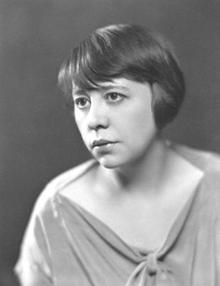
Zoe Byrd Akins was an American playwright, poet, and author. She won the 1935 Pulitzer Prize for drama for The Old Maid.
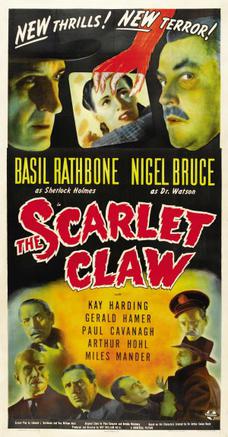
The Scarlet Claw is a 1944 American mystery thriller film based on Sir Arthur Conan Doyle's Sherlock Holmes detective stories. Directed by Roy William Neill and starring Basil Rathbone and Nigel Bruce, it is the eighth film of the Rathbone/Bruce series. David Stuart Davies notes on the film's DVD audio commentary that it's generally considered by critics and fans of the series to be the best of the twelve Holmes films made by Universal.

Anna Karenina is a 1935 Metro-Goldwyn-Mayer film adaptation of the 1877 novel Anna Karenina by Leo Tolstoy and directed by Clarence Brown. The film stars Greta Garbo, Fredric March, Basil Rathbone, and Maureen O'Sullivan. There are several other film adaptations of the novel.
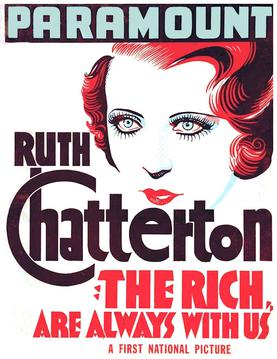
The Rich Are Always with Us is a 1932 American pre-Code romantic comedy-drama film directed by Alfred E. Green and starring Ruth Chatterton, George Brent, and Bette Davis. The screenplay by Austin Parker is based on the novel of the same name by Ethel Pettit.
The Devil to Pay! is a 1930 American pre-Code romantic drama film directed by George Fitzmaurice and starring Ronald Colman, Frederick Kerr, Myrna Loy and Loretta Young. It was written by Frederick Lonsdale and Benjamin Glazer.
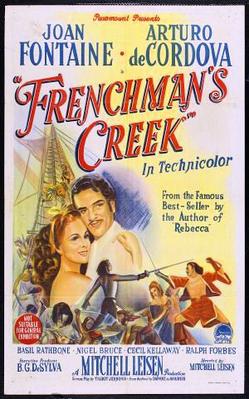
Frenchman's Creek is a 1944 adventure film adaptation of Daphne du Maurier's 1941 novel of the same name, about an aristocratic English woman who falls in love with a French pirate. The film was released by Paramount Pictures and starred Joan Fontaine, Arturo de Córdova, Basil Rathbone, Cecil Kellaway, and Nigel Bruce. Filmed in Technicolor, it was directed by Mitchell Leisen. The musical score was by Victor Young, who incorporated the main theme of French composer Claude Debussy's Clair de Lune as the love theme for the film.
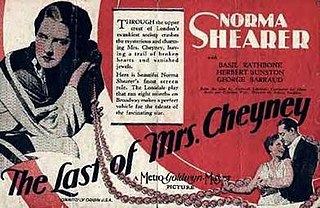
The Last of Mrs. Cheyney is a 1929 American Pre-Code comedy-drama film directed by Sidney Franklin. The screenplay by Hanns Kräly is based on the 1925 play of the same name by Frederick Lonsdale which ran on Broadway for 385 performances. The film was remade twice, with the same title in 1937 and as The Law and the Lady in 1951.
Leave It to Smith is a 1933 British comedy film directed by and starring Tom Walls. It also featured Carol Goodner, Anne Grey, Peter Gawthorne and Basil Radford. It is also known as Just Smith.

Mary Merrall, born Elsie Lloyd, was an English actress whose career of over 60 years encompassed stage, film and television work.

A Feather in Her Hat is a 1935 melodrama film starring Pauline Lord as a working-class woman with ambitions for her son. It is based on the 1934 novel of the same name by I. A. R. Wylie.

Tempe Pigott was an Australian silent and sound screen character actress. In the pre-film era she was a stage actress in England, Australia, Canada and the United States. She began appearing in motion pictures in the 1920s.
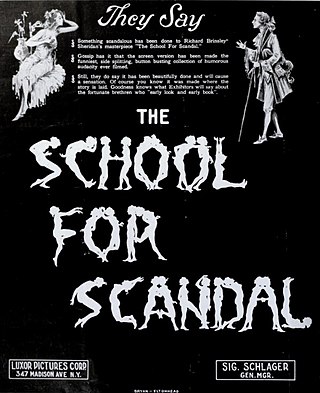
The School for Scandal is a 1923 British silent comedy film directed by Bertram Phillips and starring Queenie Thomas, Frank Stanmore, and Basil Rathbone. It is an adaptation of the play The School for Scandal by Richard Brinsley Sheridan.
The High Road is a comedy play by the British writer Frederick Lonsdale which was first staged in 1927. It opened in the West End at the Shaftesbury Theatre, and ran for 234 performances. The following year, it opened on Broadway at the Fulton Theatre, where ran for 144 performances, with Alfred Drayton and Frederick Kerr from the London cast.

















